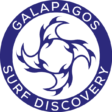
Surfing in San Cristobal, Galapagos
Of all the islands in Galapagos, San Cristobal is the most popular for surfing, as it has constant waves and spectacular breaks. Here you can typically find waves from one to three meters, ideal for those who love this sport.
Even though San Cristobal has good waves year-round, the warm season (December to April) is recognized as the best time of year for surfing. This is due to the El Niño current with its northern swells and favorable winds. During the cold season (May to November), the Humboldt current, coming from southern Latin America, brings cooler temps but more consistent swells.
While some locations are suitable for beginners, there are a lot of sharp lava rocks and other hazards and it helps to know the best entry and exit points and tide conditions. In general, a mid to rising tide or a high to falling tide is best, depending on the surf spot. For safety reasons, we recommend that you ask a local surfer to accompany you, or hire us for a surf lesson, guided surf session, or to design a custom surf tour!
Also note that, with the exception of Playa Mann, there are no lifeguards and no facilities at any of these beaches. Please observe all signage and park rules and respect the wildlife and the environment. Always take plenty of water, sun protection, and whatever else you might need.

San Cristobal Surf Spots

El Cañon
This is an exposed reef break with left waves and offshore winds from the southeast. The best surfing is December through March. Entering and exiting the water requires climbing over lava rocks.To access El Cañon you must enter a military base where you will be asked to leave a photo ID at the checkpoint. From there, you can walk or bicycle about 10 minutes along an uneven but flat paved road until you reach the surfer’s hut. The base has been closed to the public since August 2023 which means the only access to this surf break is via water taxi departing from the Muelle Acuario which typically costs $5 round trip.

La Lobería
This is an exposed reef break with both right and left waves and offshore winds. Although the best surfing is in the warm season, you can generally surf here year-round. There is also a nice beach and bay area for snorkeling and swimming with sea lions and sea turtles. Surfers typically enter via the beach and swim out through the bay.
You can access La Lobería by following a paved road two kilometers outside of town (walk, bike or taxi), then walk about 10 minutes along a sandy trail to the beach.

Punta Carola
Punta Carola is a favorite place for surfers, with sizable waves that come from the north. The right / point break (La Punta) is for experienced surfers, while the left / reef break near the beach (La Posita) is suitable for beginners and is a popular spot for surf lessons.
Access (walk, bike or taxi) is via the paved road to Playa Mann, then continue on the gravel road. From the trailhead, it’s less than a 10 minute walk to the beach. Most surfers enter the water from the beach, but you’ll also see experienced surfers hike around to the lighthouse and enter from the rocks.

Tongo Reef
Site of the 2022 World Surf League QS 1000, Tongo Reef offers an unbeatable experience for all surfers. There are a range of reef breaks for beginners (Bajo) through intermediate (Medio) and advanced (Pico). Just beyond Tongo is another reef break called Velero for intermediate and advanced surfers, also favored by bodyboarders for the tubes.Getting there is part of the adventure! Follow the same directions as above for El Cañon and then continue on foot past the surfer’s hut and old cemetery on a trail that hugs the coastline for another 20 minutes. The base has been closed to the public since August 2023 which means the only access to this surf break is via water taxi departing from the Muelle Acuario which typically costs $10 round trip.
While parts of Tongo are suitable for beginners, for safety reasons we highly recommend booking a guided surf tour with us.

Playa Mann
Playa Mann is an easily accessible, family-and tourist-friendly beach that occasionally offers short, surfable, right and left waves. There are food and drink vendors, restrooms, changing rooms, and plenty of sea lions to keep you company. There is a short boardwalk that leads to a lighthouse and off of that point to the left is another surf break called El Faro. For most locals, these waves are “last resort” options when nothing else is breaking.

Puerto Chino
Located at the end of the only road that crosses the island, Puerto Chino is about 30 minutes by taxi from Puerto Baquerizo Moreno. It’s the only readily accessible beach break, making it our favorite spot for surf lessons. You can also combine a trip to Puerto Chino with a visit to La Galapaguera tortoise conservation center and El Junco crater lake. Check out our Highlands Tour for more details.

Manglecito
A fairly exposed reef and left point break, Manglecito is located on the northwestern coast of San Cristóbal. It is only reachable by chartering a specially-licensed boat. As such, it’s best booked as part of a group surf tour.
Punta Pitt
Not many people can say they have surfed Punta Pitt. Located at the northeastern-most point of San Cristóbal, a trip here requires chartering a boat with a special permit as well as accompaniment by a national park guide. The exposed offshore reef and right hand break typically offers the best conditions in December. Contact us to arrange a day trip!


